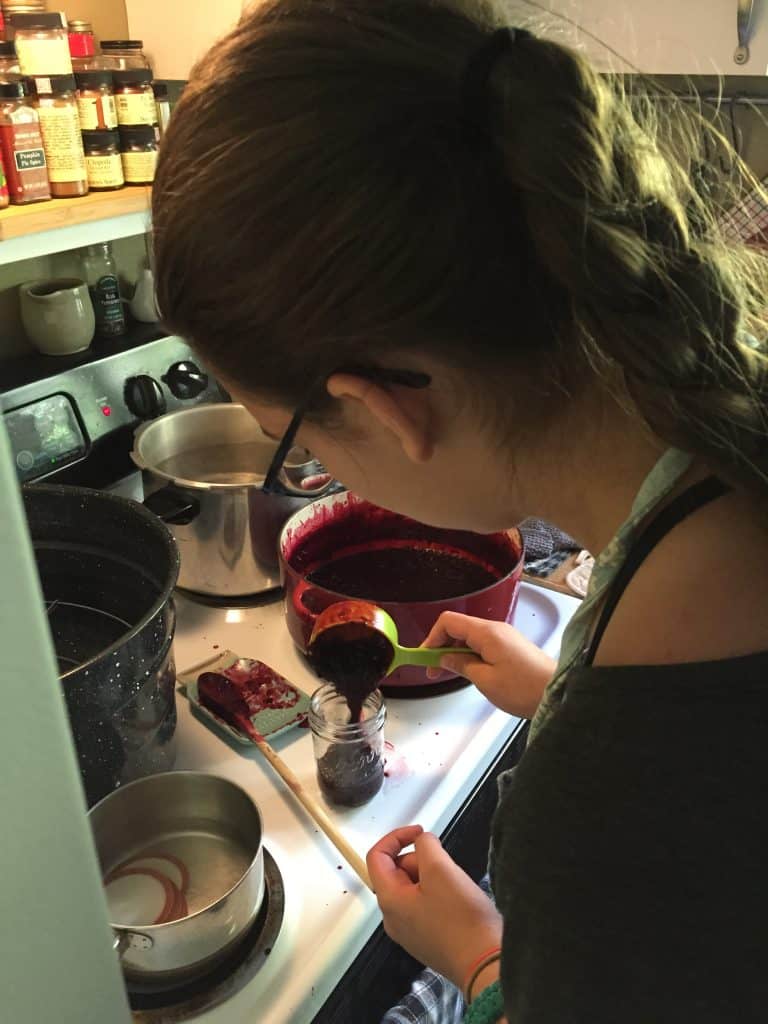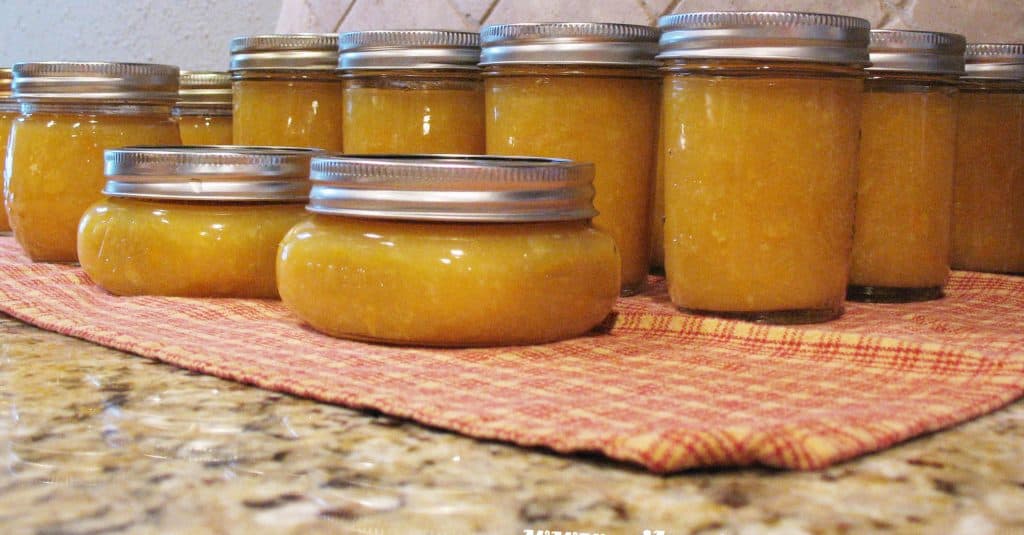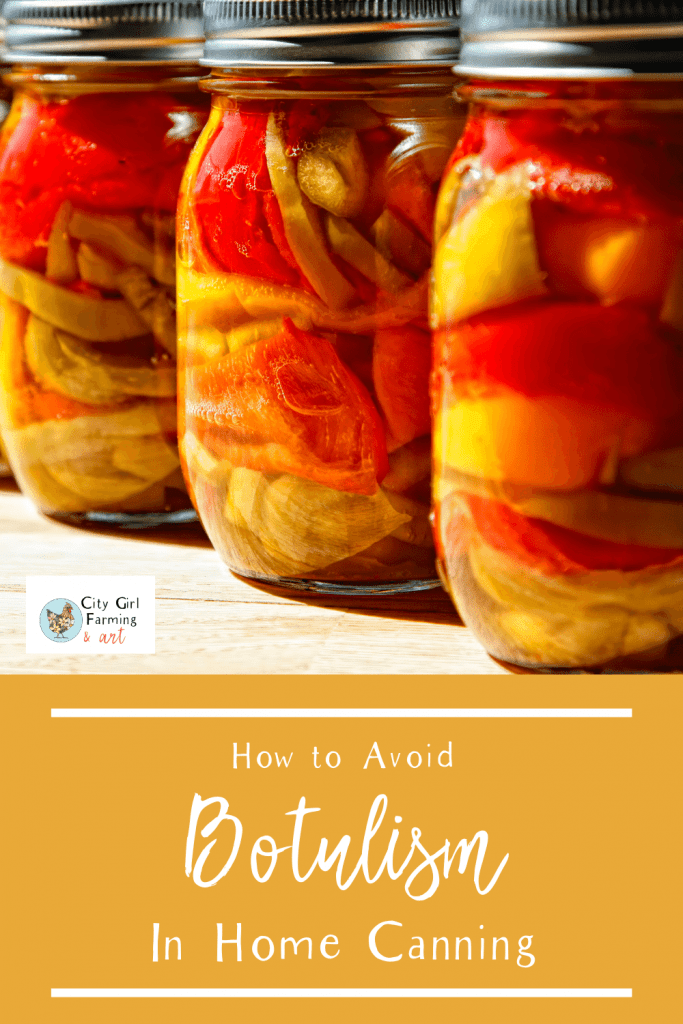What does botulism and home canning have in common? Is it even safe to do your own canning? If you’ve ever worried about accidently killing someone (or making them very sick) with your home canned goods, this information is for you!

You’ve probably heard it go by from time to time. Home canned goods can contain botulism. Botulism can kill you! But is it true? Or just an old wives tale? What are the real risks? How common is it? And what is botulism anyway?
What is Botulism?
Botulism is a bacteria called Clostridium botulinum (or C. botulinum for short). It’s in the soil and water, in vegetables and meat. Even in our intestines. Basically, it’s everywhere.
If a person has been poisoned by botulism through food (foodborne botulism is just one of many forms of botulism), it attacks their nervous system. They can experience all sorts of symptoms from double vision, paralysis, and more, including death.
Botulism is scary because it can be fatal…yet, you can’t see or smell or taste it if it’s present. Because it can be found in improperly home canned food, it makes some people afraid to try home canning.
I mean, how can you protect yourself and your family against something if you don’t even know it’s there?
The CDC reports that between 1996 and 2014, there were 210 outbreaks of foodborne botulism. Of those 210 cases, 145 of them were traced to home-prepared foods. Of those 145 cases of homemade food, 43 cases were traced to home-canned vegetables (due to people who didn’t follow canning rules and didn’t use proper equipment).
Botulism and Home Canning
While botulism is serious, you can see from the above numbers that less than 3 cases per year (on average) come from home canned vegetables, so it’s also very rare. This does not mean we should dismiss botulism, but a little perspective is always helpful.
The problem isn’t that botulism is everywhere but that under the right conditions it creates a toxin that will make you very sick or even kill you. What are those perfect conditions?

Botulism thrives in environments with:
- Little or no oxygen
- A pH level of less than 4.6
- Temperatures between 70-100 degrees (Fahrenheit)–think long term storage here
- A moisture content of 35% or more
What does this remind you of? If you thought a jar of home canned food, you’re right! Home canned foods that are improperly canned are the perfect breeding ground for botulism.
Botulism dies in:
- Heat (botulism itself is heat resistant, but the toxin it creates that’s deadly will die in high temperatures)*
- High acid (pH) which is why most fruit and pickled foods don’t need to be pressure canned)
- High salt
- Storing jars long term in low temperatures
Keeping these things in mind, it starts to make sense that canning recipes have you add salt, lemon juice or vinegar, contain specific boiling times, etc. They are all measures to help ensure you have a safe food product in the end.
This is also why some foods are safe to just water bath process (jams, jellies, pickled vegetables, tomatoes (if you add lemon juice), most fruit. And why some foods (meat, beans, vegetables) require more heat and processing.
*water bath canning temperatures generally reach 180-212 F, while a pressure canning will get up to 240 F or above, which is needed to ensure some types of food are safe.

Safe Home Canning Practices (to Remove the Threat of Botulism)
IMPROPER home canning is the problem with potential botulism poisoning. But the good news is that if you simply follow the canning directions, you’ll be okay.
Here’s what to do to protect yourself and others against botulism in your home canned goods:
- Follow the canning directions. (This is not an area where you can get creative and tweak recipes. You really need to actually FOLLOW the directions and do what they say).
- Make sure you’re using an approved canning recipe (If you’re not sure some standard go-to places are all BALL canning books (affiliate links) like this, this, this and this as well as recipes as well as well as the National Center for Home Food Preservation)
- Boil the food for the proper amount of time (10 minutes if you’re under 1,000 feet in altitude. Add 1 minute per 1,000 feet to that 10 minutes for higher elevations)
- If a jar doesn’t properly seal, stick it in the refrigerator and use it soon
- Don’t can milk, eggs, wheat or pumpkin puree (pumpkin chunks are okay, but it’s really hard to get pumpkin puree up to the proper internal temperature to make sure it’s safe)
Here’s where people go wrong:
- Not following directions (adding or deleting ingredients, not boiling for long enough, etc.)
- Using a recipe that isn’t approved recipe for canning (Your friend’s great aunt’s recipe might not be safe)
- Skipping the pressure canner on low pH foods (basically all vegetables and meat)
- Using wrong equipment (like using a multi-purpose appliance for pressure canning instead of a presser canner)
- Not boiling the jars for the proper amount of time (the time factor helps the inside of the food in the jars get to the proper temperature for safety)

Be Smart But Don’t Be Scared of Botulism in Home Canning
The bottom line is, the risk for botulism is so very minimal if you just use common sense and follow the rules. **
**A note here for the non-rule-follower-type-person. I am one of those. 100%. And yes, sometimes it kills me to not be able to tweak a canning recipe, however, growing up canning, it was instilled in me at an early age to follow. the. recipe. to. a. T.
If you don’t think you can do that, there are other ways to preserve your food besides canning it. You might want to try freezing food or freeze-drying it, or dehydrating it. Or, what I like to do is tell myself I can personalize it when I open it up later to use it. Then I can add the extra veggies or whatever I wished I could add at the time of canning.
In the end, follow the rules for just this one thing and breathe a sigh of relief. The rules are there to protect you and in the end you’ll have lovely food to eat and share with others without the fear that you might kill someone.
